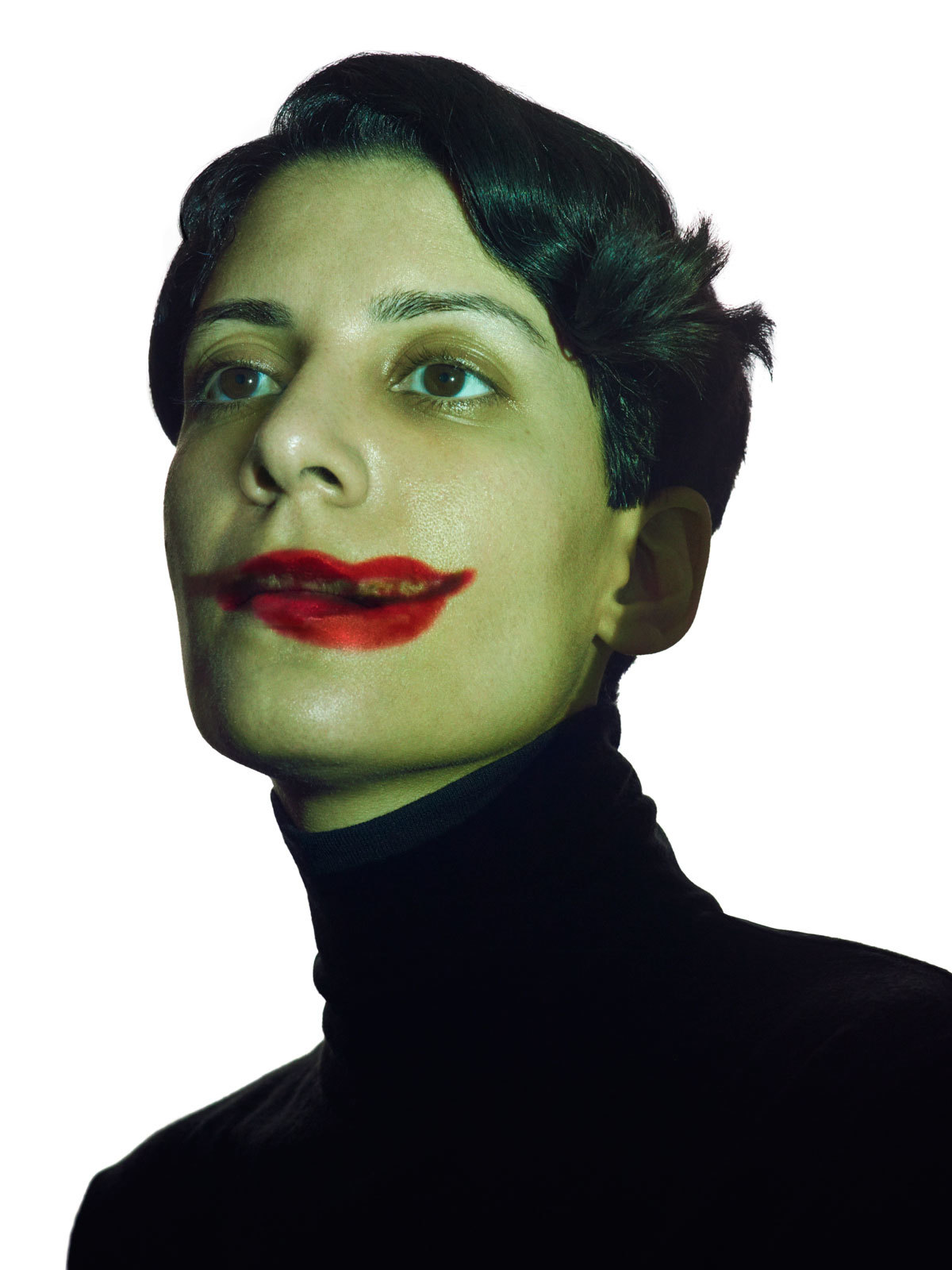Fatima Al Qadiri is proof that synthesized sounds can still make a political statement. The Kuwaiti artist and producer’s second album Brute opens with a sample of a Long Range Acoustic Device, a sonic weapon used by cops to disperse crowds at protests in Ferguson and during Occupy Wall Street. On Al Qadiri’s record, the sound becomes siren-call to action. Personal ghosts haunt the album, too: “I’ve experienced major protests in the States and I’ve experienced curfews in Kuwait,” she says. She was nine-years-old in 1990, when Saddam Hussein invaded the tiny oil-rich desert state — which is bordered by Iraq, Iran, and Saudi Arabia and the Gulf Sea. The event, which turned her parents into resistance fighters, still shapes her totally singular sound and aesthetic, cueing an encyclopaedic array of influences including early 8-bit computer game soundtracks, hip-hop, and non-Western tonalities.
Brute, chock-full of Al Qadiri’s trademark grimey bass, choral synths, and icily inert minor progressions, is an ominous brooding on authority and a record about protest — but not “protest music”. Artists Josh Kline and Babak Radboy collaborated on the album’s cover art, rendering a Teletubby in SWAT gear. But otherwise, “this record is completely a fantasy free zone.” i-D caught up with the artist — who recently relocated from New York to Berlin — to talk about expression, power, and freedom.
What’s behind the album’s artwork, track titles, and mood?
I think there are a lot of things in one’s subconscious that are suddenly just ejected out. I had an injury at the time of writing that I think contributed a lot to my state of mind due to be being confined to a bed. It’s oppressive. I wanted it to sound like a mind that was falling apart.
A sense of collapse? The record has a circular, spiraling quality.
I was in this mental cycle of anger and despair while I was writing it. I was looking at Twitter constantly, where I follow a lot of activists, and usually when you’re looking at events that are unfolding around the world you can just check out, you feel emotional, and then move on. But I didn’t have a distraction from the rage of the despair. It just kept building and building. There’s a sense of powerlessness and despair when you’re beholding power and the relations between marginalized populations and the state, and I feel for all the activists who are actually on the streets fighting the powers that be. You and they are always one step behind the PR agencies who are five steps ahead. So it’s kind of like a hopeless observance, but at the same time you want to show support and solidarity from a million miles away, albeit looking at it through a screen. It’s the predicament we find ourselves in.
How did being outside the US color your view on events there?
I used the US as an example because ultimately the record is about power and America is the most powerful country in the world, but I think that the phenomenon of police brutality against marginalized communities is worldwide. Look at what happened in London with Mark Duggan. It’s in Kuwait as well. It’s all over the world. The record has to do with power, having a right, and having a say, but it’s also about illusions. For me the biggest illusion is freedom of assembly. Why there aren’t more articles and more conversations about this subject? When protests happen it feels like everyone is talking about everything but the core of the issue is that every single protest is deemed illegal at some point and is branded as being violent pretty much immediately. If there are enough people out on the street it’s like, “OK it’s a violent protest, let’s shut it down.” These authoritarian rituals and practices are what unite democracies and authoritarian regimes. You know they banned freedom of assembly in France, where democracy was born? If the peasants didn’t go out into the streets they would still have a monarchy!
Why do you think more musicians are responding to issues of conscience?
I think musicians and artists create work about what moves them or interests them. Sometimes political subjects seem overwhelming. I feel my overwhelment is sonically palpable. The subject is so oppressive and disgusting and fucked up, I almost think an instrumental record makes sense because what could you possibly say about this fucking thing that hasn’t been said a million times by people a thousand times more erudite than you? Let’s just do it instrumentally.
It articulates this without words.
Exactly, you’re speechless anyway. All the marginalized communities in the world are speechless. I felt this powerlessness is best conveyed purely sonically, without words. I sent it to a couple of friends who recently witnessed very brutal protests in their own countries [in Bahrain and Turkey], who told me how much it reminded them of being in those events, and that really moved me. I felt I’d touched something.
Many artists who make music and art see little distinction between the two. Do you?
I’m reading these interviews with Marcel Duchamp at the moment and he is such an incredible man. He’s constantly asked these questions about art and what it is to be an artist and he says very succinctly, “Art is a way of thinking.” I always quote Preditah and he says, “Grime is freedom.” They are the same thing. I want freedom to express however I want to express, in the medium I want to express it in. I think having all these “you’re not fitting these categorical whatevers” has nothing to do with the work. It’s just a construct. A wall. A hang-up. A very basic notion of art is against confinement and categories and rules. It says a lot about the current state of what is reality of art practice or music practice.
Brute is released on Hyperdub.
Credits
Text Sharon Thiruchelvam
Photography Daniel Sannwald
